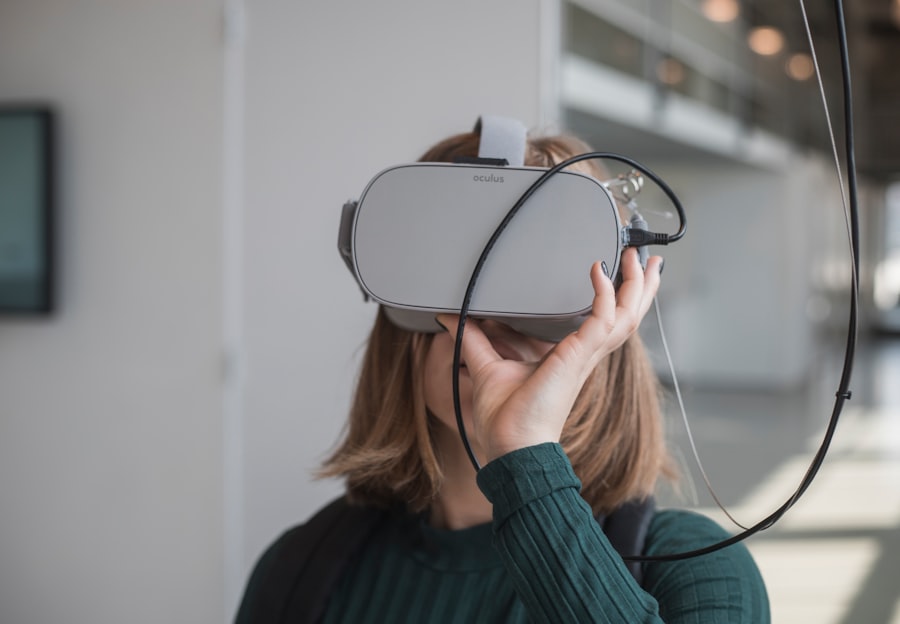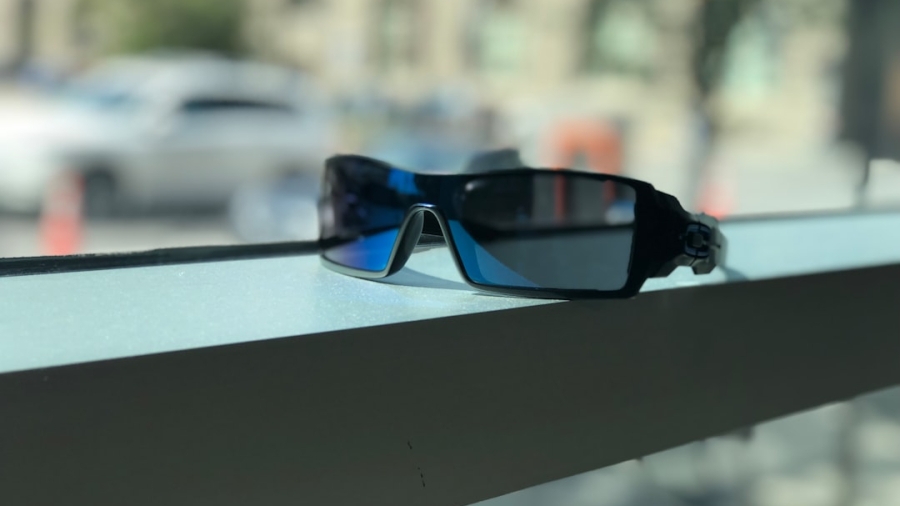Augmented Reality (AR) has emerged as a transformative technology that overlays digital information onto the physical world, creating an interactive experience that enhances our perception of reality. Unlike Virtual Reality (VR), which immerses users in a completely digital environment, AR enriches the real world by integrating virtual elements, such as images, sounds, and other sensory stimuli. This innovative technology has gained traction across various sectors, from entertainment to education, and its applications continue to expand as advancements in hardware and software make AR more accessible and effective.
The proliferation of smartphones and tablets equipped with powerful cameras and sensors has further accelerated the adoption of AR, allowing users to engage with this technology in their everyday lives. The potential of Augmented Reality is vast, as it bridges the gap between the digital and physical realms, offering new ways to interact with information and environments. By enhancing our surroundings with contextual data, AR can improve decision-making processes, facilitate learning, and foster creativity.
As industries recognize the benefits of AR, they are increasingly integrating it into their operations, leading to innovative solutions that address complex challenges. The ongoing development of AR technologies promises to reshape how we work, learn, and communicate, making it essential to explore its applications across various fields.
Key Takeaways
- Augmented Reality (AR) is a technology that overlays digital information onto the real world, enhancing the user’s perception and interaction with their environment.
- AR is revolutionizing training and education by providing immersive and interactive learning experiences, allowing students to visualize complex concepts and practice real-world skills in a safe environment.
- In design and engineering, AR is being used to create 3D models, visualize designs in real-world settings, and streamline the prototyping and testing process.
- AR is transforming healthcare by enabling medical professionals to visualize patient data, perform simulations, and assist in surgeries with real-time guidance and information.
- In retail and marketing, AR is enhancing customer experiences with interactive product demonstrations, virtual try-ons, and location-based promotions, driving engagement and sales.
- AR is facilitating remote collaboration by allowing users to share and interact with digital information in real time, regardless of their physical location.
- The future of AR in the workplace holds potential for further integration into everyday tasks, from hands-free work instructions to real-time data visualization, enhancing productivity and efficiency.
Augmented Reality in Training and Education
In the realm of training and education, Augmented Reality has proven to be a game-changer, providing immersive learning experiences that engage students in ways traditional methods cannot. By superimposing digital content onto real-world environments, AR allows learners to visualize complex concepts and interact with them in a tangible manner. For instance, medical students can use AR to practice surgical procedures on virtual patients, gaining hands-on experience without the risks associated with real-life operations.
This interactive approach not only enhances understanding but also boosts retention rates, as students are more likely to remember information they have actively engaged with. Moreover, AR fosters collaboration among students and educators by enabling shared experiences that transcend geographical boundaries. Virtual classrooms equipped with AR tools can facilitate group projects where students from different locations work together on a common task, enhancing their teamwork skills while learning from one another.
Additionally, educators can leverage AR to create customized learning experiences tailored to individual student needs, ensuring that each learner can progress at their own pace. As educational institutions continue to embrace this technology, the potential for Augmented Reality to revolutionize teaching methodologies and improve educational outcomes becomes increasingly evident.
Augmented Reality in Design and Engineering

In the fields of design and engineering, Augmented Reality is revolutionizing the way professionals conceptualize and develop products. By allowing designers to visualize their creations in a real-world context, AR enables them to assess proportions, aesthetics, and functionality before moving into production. For example, architects can use AR to overlay digital models of buildings onto physical sites, providing clients with a realistic preview of how a structure will fit into its environment.
This capability not only streamlines the design process but also facilitates more informed decision-making by stakeholders who can see and interact with proposed designs in real time. Furthermore, AR enhances collaboration among engineers and designers by providing a shared platform for visualizing complex projects. Teams can use AR tools to annotate designs, highlight potential issues, and brainstorm solutions collectively.
This collaborative approach reduces the likelihood of miscommunication and errors during the design phase, ultimately leading to more efficient workflows and higher-quality outcomes. As industries continue to adopt Augmented Reality technologies, the potential for innovation in design and engineering will only grow, paving the way for more sophisticated products and solutions that meet the demands of an ever-evolving market.
Augmented Reality in Healthcare
The healthcare sector is experiencing a significant transformation thanks to Augmented Reality, which is enhancing patient care and medical training alike. One of the most notable applications of AR in healthcare is its use in surgical procedures. Surgeons can utilize AR overlays to visualize critical information—such as patient anatomy or imaging data—directly on their field of view during operations.
This integration of digital data into the surgical environment not only improves precision but also reduces the risk of complications by providing surgeons with real-time insights that inform their decisions. In addition to surgical applications, AR is also proving invaluable in medical education. Students can engage with 3D anatomical models that are projected onto their surroundings, allowing them to explore human anatomy in an interactive manner.
This hands-on approach fosters a deeper understanding of complex biological systems compared to traditional textbook learning. Moreover, AR can facilitate remote consultations between healthcare professionals and patients or specialists, enabling expert guidance without the need for physical presence. As these applications continue to evolve, the potential for Augmented Reality to enhance both patient outcomes and medical training is becoming increasingly apparent.
Augmented Reality in Retail and Marketing
The retail industry is undergoing a significant transformation through the integration of Augmented Reality into marketing strategies and customer experiences. Retailers are leveraging AR technology to create immersive shopping experiences that engage consumers on a deeper level. For instance, customers can use AR applications to visualize how furniture would look in their homes before making a purchase or try on clothing virtually without stepping into a fitting room.
This capability not only enhances customer satisfaction but also reduces return rates by allowing consumers to make more informed decisions based on realistic representations of products. Moreover, AR is reshaping marketing campaigns by providing brands with innovative ways to connect with their audiences. Interactive advertisements that incorporate AR elements can capture consumer attention more effectively than traditional media.
For example, brands can create engaging experiences where customers scan products with their smartphones to unlock exclusive content or promotions. This not only drives engagement but also fosters brand loyalty as consumers feel more connected to the products they purchase. As retailers continue to explore the possibilities of Augmented Reality, it is clear that this technology will play a pivotal role in shaping the future of shopping.
Augmented Reality in Remote Collaboration

In an increasingly globalized world where remote work has become commonplace, Augmented Reality is emerging as a powerful tool for enhancing collaboration among teams separated by distance. By providing immersive environments where team members can interact with digital content in real time, AR facilitates communication and problem-solving in ways that traditional video conferencing cannot match. For instance, engineers working on a project can use AR to visualize complex designs together, allowing them to identify issues and brainstorm solutions collaboratively without being physically present in the same location.
Additionally, AR can bridge cultural and language barriers by providing visual aids that enhance understanding among diverse teams. When team members from different backgrounds collaborate on a project, AR tools can help convey ideas more effectively through visual representations rather than relying solely on verbal communication. This capability fosters inclusivity and ensures that all voices are heard during discussions.
As remote work continues to be a significant aspect of modern business practices, the role of Augmented Reality in facilitating effective collaboration will undoubtedly grow.
The Future of Augmented Reality in the Workplace
Looking ahead, the future of Augmented Reality in the workplace appears promising as organizations increasingly recognize its potential to enhance productivity and innovation. As technology continues to advance, we can expect more sophisticated AR applications that seamlessly integrate into daily workflows. For instance, future developments may include wearable AR devices that provide employees with hands-free access to critical information while they perform tasks—allowing them to maintain focus on their work without distractions.
This could lead to significant improvements in efficiency across various industries. Moreover, as businesses continue to embrace digital transformation initiatives, the integration of Augmented Reality into workplace training programs will likely become standard practice. By providing employees with immersive learning experiences that simulate real-world scenarios, organizations can better prepare their workforce for challenges they may encounter on the job.
The ability to visualize complex processes or collaborate remotely using AR tools will empower employees to perform at their best while fostering a culture of continuous learning and adaptation. As we move forward into an era defined by rapid technological advancements, it is clear that Augmented Reality will play an integral role in shaping the future landscape of work across diverse sectors.
In exploring the transformative impact of technology on workplace practices, it’s also valuable to consider how specific tools facilitate the creation of educational and training materials. Augmented Reality (AR) is revolutionizing various sectors, including how training programs are developed and delivered. A related aspect is the use of specialized software to create effective training videos, which is crucial for enhancing learning and development in a corporate setting. For more insights into software that can aid in creating such training materials, you might find this article useful: Best Software to Create Training Videos. This resource discusses different software options that can help in crafting engaging and informative training videos, which are essential for effective knowledge transfer in today’s digitally driven work environments.
FAQs
What is augmented reality (AR)?
Augmented reality (AR) is a technology that superimposes digital information such as images, videos, or 3D models onto the real world, typically viewed through a device such as a smartphone or AR glasses.
How is augmented reality changing the way we work?
Augmented reality is changing the way we work by providing new tools for training, remote assistance, visualization of complex data, and improved collaboration among teams.
What are some examples of augmented reality in the workplace?
Examples of augmented reality in the workplace include using AR for equipment maintenance, assembly instructions, architectural visualization, medical training, and virtual meetings.
What are the benefits of using augmented reality in the workplace?
The benefits of using augmented reality in the workplace include improved efficiency, reduced errors, enhanced training experiences, better visualization of data, and increased collaboration among remote teams.
What are the challenges of implementing augmented reality in the workplace?
Challenges of implementing augmented reality in the workplace include the cost of AR devices, integration with existing systems, data security concerns, and the need for specialized technical skills to develop AR applications.

